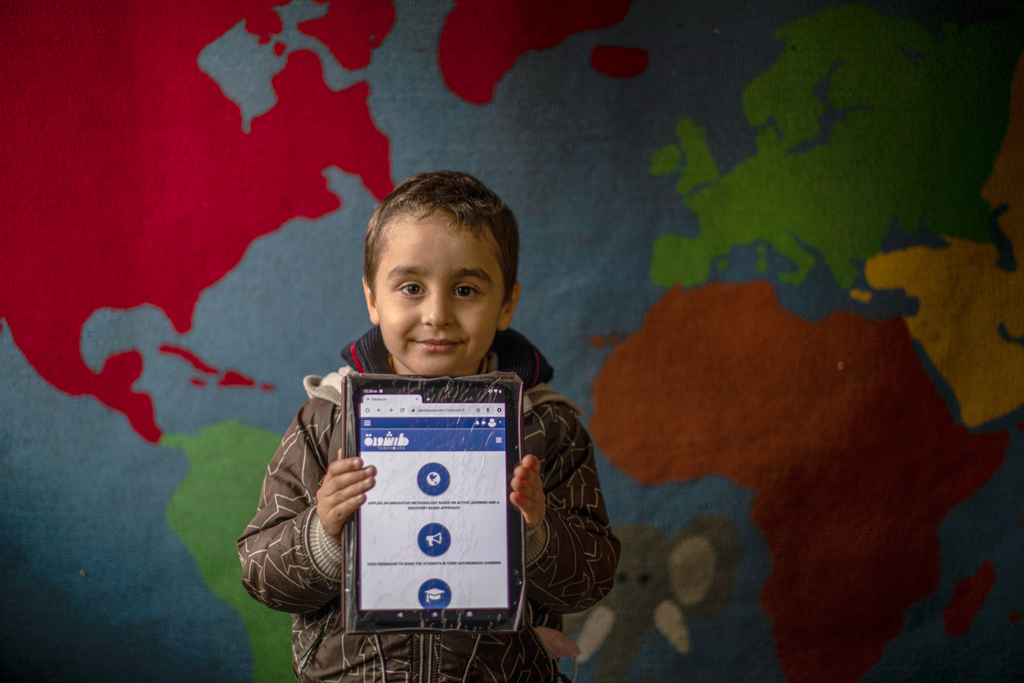
Millions of children at risk in world’s unsafe water crisis
Early childhood development, Health and nutrition
On World Water Day today, hundreds of children will die due to lack of clean water and millions more will spend hours missing out on school to collect water supplies.
About 800 children under five die every day from diarrhoea linked to inadequate water, sanitation and hygiene.
And 600 million children – or one in four worldwide – will be living in areas with extremely limited water resources by 2040.
The devastating figures come today on World Water Day and are a timely reminder of one of the biggest crises faced by developing countries.
Millions of girls also miss out on school because they have to collect water – often walking miles to fetch it for their family.
Add in the fact that 31% of schools worldwide do not have clean water and 34% lack adequate toilets and you get an idea of the scale of the water problem globally.
Whether it’s water that’s clean enough to drink or water that provides efficient hygiene and sanitation, it’s in scarce supply for many millions of people.
Having access to clean water and food should be an essential part of living. The need for nutrition, including good water supplies, is part of Theirworld’s #5for5 campaign to put pressure on world leaders to take urgent action to make sure all children – especially the poorest and most marginalised – get their basic needs met.
Safe drinking water, proper sanitation and hygiene can prevent undernutrition and lack of growth in children by preventing diarrhoea and other conditions.
World Water Day is part of a global mission to get safer water in every situation. It’s a day to raise awareness for an ever-worsening global problem.
Every time young children drink unclean water, they are putting their young lives at risk from diarrhoea, malaria, typhoid, cholera, worms and parasites, and trachoma.
Think about when you are ill with a stomach bug. What if there was no clean water to drink to hydrate you? What if your only choice was polluted water? Your chances of recovering are diminished.
These are the life-threatening challenges children in developing countries battle every day. Yet the developed world takes clean water for granted.
“Water is elemental – without it, nothing can grow,” said Anthony Lake, Executive Director of the United Nations children’s agency UNICEF .
“But around the world, millions of children lack access to safe water – endangering their lives, undermining their health and jeopardising their futures. This crisis will only grow unless we take collective action now,”
A UNICEF report called Thirsting for a Future – published today – looks at the threats to children’s wellbeing and lives caused by depleted sources of safe water and the ways climate change will intensify these risks in coming years.
“Around 36 countries are currently facing extremely high levels of water stress, which occurs when demand for water far exceeds the renewable supply available,” it said.
“Warmer temperatures, rising sea levels, increased floods, droughts and melting ice affect the quality and availability of water as well as sanitation systems.”
The research has found that, as the world’s population grows, the demand for water is greatly increased and developing countries are struggling to meet this demand. Conflicts in many parts of the world also threaten children’s access to safe water.
Children regularly have no option but to use unsafe water, which exposes them to potentially deadly diseases like cholera and diarrhoea.
Many children – usually girls – in drought-affected areas spend hours every day collecting water. This causes them to miss or drop out of school and be vulnerable to attack as they walk long distances.
Two-thirds of the world’s population live in areas that experience water scarcity for at least one month a year, according to the 2017 UN report Waste Water, The Untapped Resource.
The global Sustainable Development Goals, launched in 2015, include a target to ensure everyone has access to safe water by 2030
This year World Water Day theme is reducing and reusing wastewater.
More news

